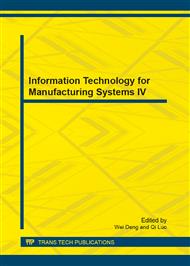p.573
p.579
p.585
p.591
p.595
p.601
p.605
p.609
p.616
New Approach in Design of Automated Assembly Station for Disassembly Process
Abstract:
In this contribution is presented the new idea of another approach and application of designed and verified assembly station that can be used for disassembly process. Automated assembly station with Cartesian industrial robot is especially designed for assembly of specific products. New approach consists in the fact that such equipment can be used for disassembly of assembled products after lifecycle. This solution can be used where it can be readjusted assembly station by proposing of particular disassembly equipment that supports the disassembly process. The paper deals with the analysis of automated assembly station design methodology and with proposals for concrete actions that need to be made to the assembly station may to change to a device designed for disassembly process. This problematic solves a development of the assembly and disassembly station with respect to lifecycle management of the assembly product and also assembly system with Cartesian robot. The main idea of the development of such a device is the use of the same Cartesian industrial robot, material supply devices, assembly and disassembly units in one workplace with different application. Result of design methodology is the verification and proposition of real automated assembly and disassembly workplace with Cartesian robot for known verified model of assembled actuator.
Info:
Periodical:
Pages:
595-600
Citation:
Online since:
September 2013
Authors:
Price:
Сopyright:
© 2013 Trans Tech Publications Ltd. All Rights Reserved
Share:
Citation:


